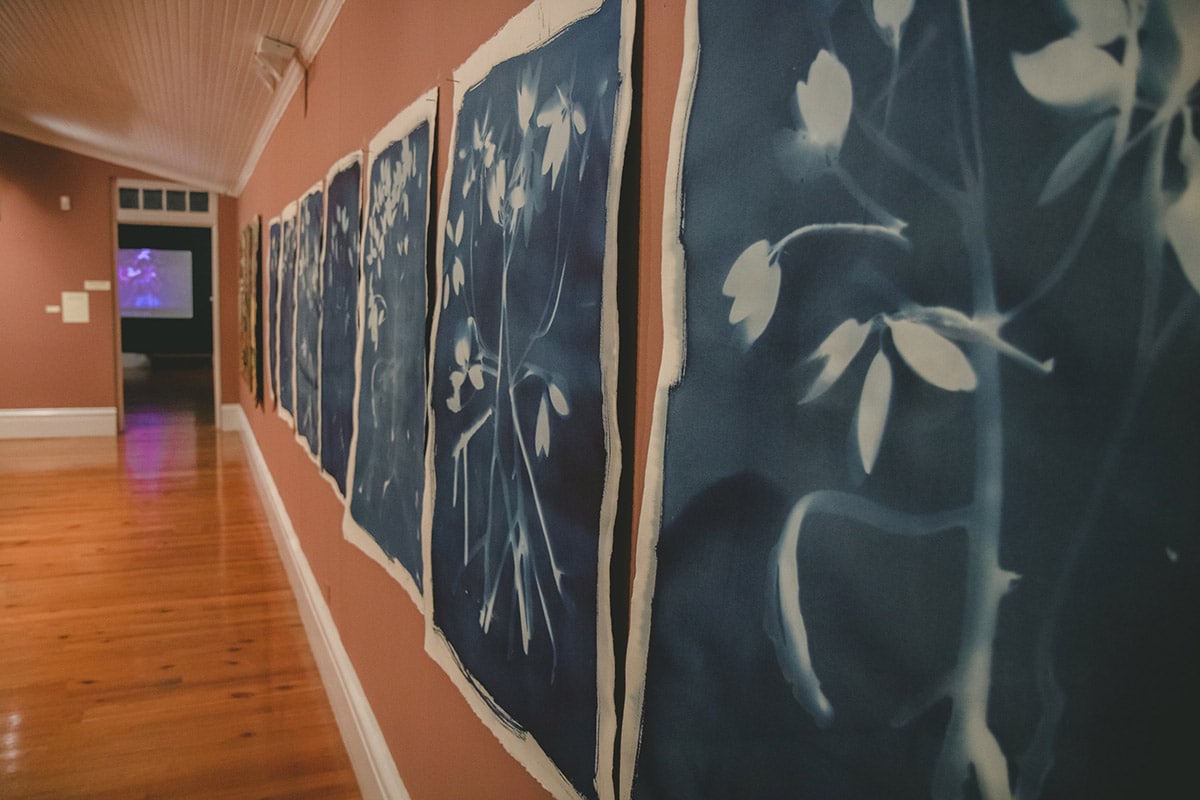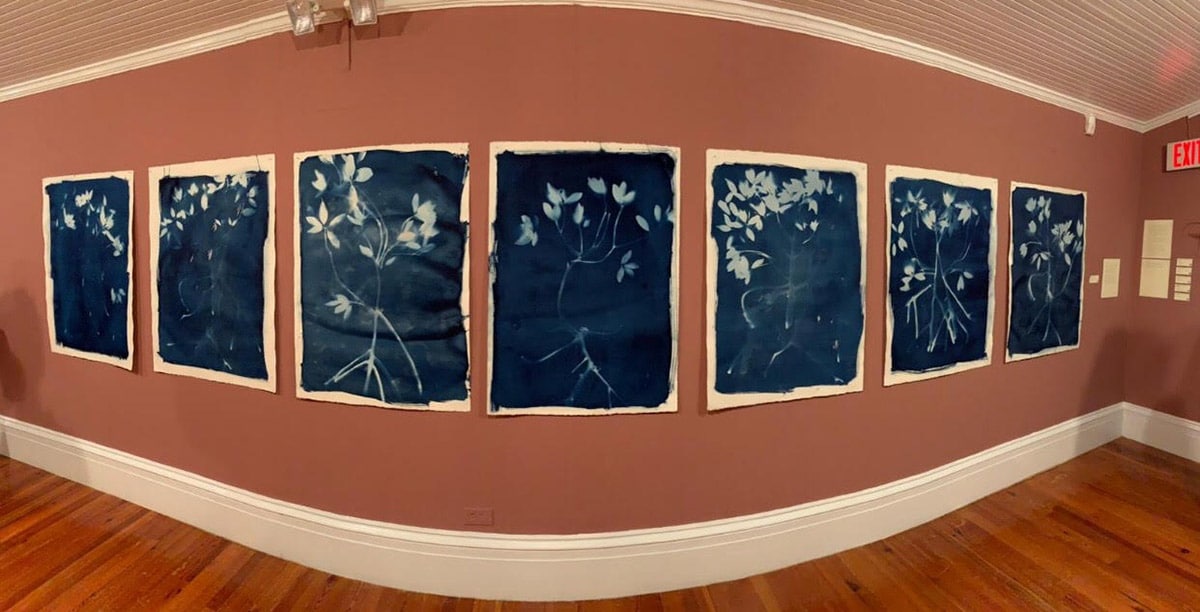
By Kevanté Cash- NAGB Correspondent
When the call for “The Fruit and The Seed” exhibition went out last year, the three main questions that stood out to artist Natascha Vazquez were:
How are you diversifying your experiences and thoughts through art?
How are you encouraging your colleagues and peers in this creative ecology?
How are you working with The Bahamas’ vulnerable geography to advocate for the environment?
From these birthed a vision to submit a proposal for works that would take her far away from her comfort zone of abstract paintings, and delving into another art form that honestly answers the question of diversifying one’s artistic experience.

From the “Blue Carbon” series, 2018. Natascha Vazquez. Cyanotype on paper, 29 1/2″ x 41 1/2″. Image courtesy of the artist.
“My paintings often allude to botanicals and organic shapes that kind of are inspired by something I would see in bushes or forests, but more so here in The Bahamas that I might see in a Bahamian bush. So, I was already kind of interested in that idea, but then I thought about the questions posed by Holly Bynoe, the chief curator for this exhibition, along with the theme, and I remember specifically reading a question that talked about the community and how one’s practice should affect the art community at large. Moreover, I thought, instead of retreating into my studio and creating paintings in isolation, why not incorporate that idea of community into this work and see how I can create a piece for this exhibition that’s more about the community as opposed to me, as the artist?”
Vazquez’s role as creative programme coordinator and curator at Baha Mar’s The Current Art Studio and Centre has lead her to the responsibility of not only putting out a call for artists to participate in a residency hosted by The Current, but also to look over artists’ proposals and approve of residencies held within the space. A lot of this work has created opportunities for her to interact with other artists within different practices, whose work have caused a shift in gaze on how she views art and creates it.

Work of Anna Atkins from “Cyanotypes of British Algae” (1843)
During the time of the NE9 exhibition call, Kendra Frorup was an artist-in-residence at The Current, whose work was one of those whom Vazquez says, inspired her series “Blue Carbon” for “The Fruit and The Seed” exhibition.
“I had attended one of the classes that Kendra had put on at The Current, and the first thing she wanted students to do was to start collecting things – household or generic items that one can use to incorporate into their art. So, that night, I went for a drive, and I found a site that had uprooted mangroves because there was construction happening there at that time. Also, I started to collect them, because they have an interesting shape and form to me, and I attempted printing with them. There was a steam roller that I used to print the plants on paper, but that did not work, and there were a lot of failed attempts.”
“So after that, I started researching more into printmaking just because of my interaction with Kendra. So I thought, ‘let me think about this a little more just to get away from my normal practice’, and I came across Anna Atkins’ “Cyanotypes of British Algae” (1843) book and started learning more about the history of printmaking. So after that, I began a different course. I got the chemicals, and we started mixing them and I painted them onto pieces of paper in a black room and rolled them up, put them outside in the sun, laid them out, took the dead mangrove plants I had collected and placed them on top of the of paper, allowed the sun to expose the print, and that’s how I came up with those prints for the series.”
Of her first time experience with printmaking, Vazquez says she enjoyed the swiftness of it all along with the learning aspect of the experiment.

Layout of Vazquez’ work in the NE9
“It took me out of my comfort zone, and that is what I enjoyed most about it, though it only took a few days of trial and error to create. I learned that I am not so in my box after all, and I think that is a fear for a lot of artists – that you are just going to fall into a routine of making the same stuff. And so, the fact that this open call and all these kinds of questions Holly [Bynoe] posed to the public was able to get me out of that space, it showed me that I did have the capability of doing that. It gave me much confidence as an artist to shift away, do something completely new and be okay with that.”
The purpose of this series was to “showcase the plant as if it were a person of importance – a King, a President, some public figure – I want the viewer to feel a deep sense of respect and awe for both the beauty and the value of the mangrove,” as was expressed in Vazquez’s artist statement.
To emerging artists who may wish to submit works into future NE’s, Vazquez gives the most straightforward yet most profound advice of staying true to one’s self and practice.

From the “Blue Carbon” series, 2018. Natascha Vazquez. Cyanotype on paper, 29 1/2″ x 41 1/2″. Image courtesy of the artist.
“When there’s a call like this, and it’s in the national institution, it’s often intimidating on you as an artist to have your proposal for work under review and scrutinised, so many times, artists would try to fabricate something that they’re not already comfortable with or passionate about doing just to kind of please the needs of others, or work that think will make it, as opposed to doing what’s right to them. So, I think if you are just true to your practice, you will always succeed.
The ninth National Exhibition, “The Fruit and The Seed” remains on display for all to see until Sunday, April 7, 2019.